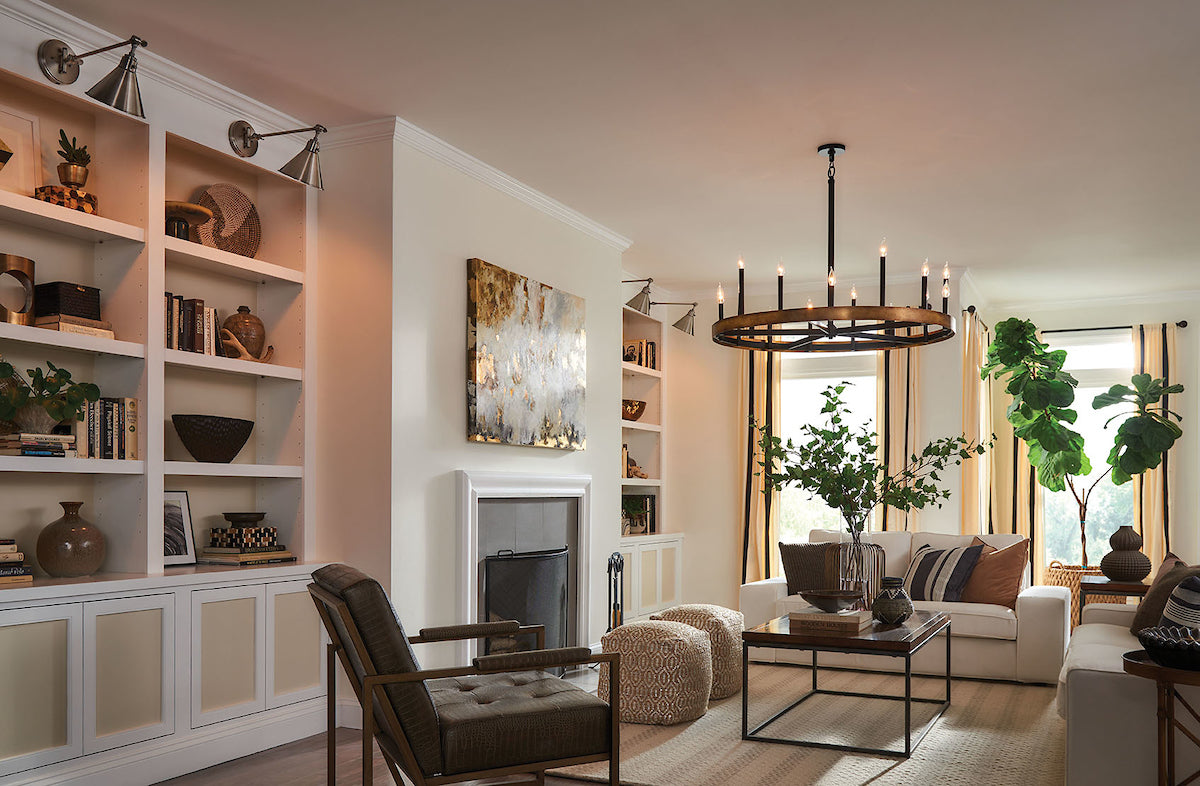On orders $99+
On orders $99+

The best type of lighting for a living room is a balanced blend of ambient, task, and accent lighting. Ambient lighting, such as recessed lights or elegant flush mounts, provides the overall illumination and sets the foundational mood of the space. Task lighting, like focused floor lamps beside reading chairs or table lamps on side tables, offers targeted brightness for specific activities like reading or crafting. Accent lighting, including wall sconces or track lighting, adds depth and interest by highlighting architectural features, artworks, or decorative elements within the room. This layered approach not only ensures practical functionality for various tasks and activities but also creates a warm, inviting ambiance that can adapt to different moods and occasions in your living space.
The living room, often a hub of household activity and relaxation, requires thoughtful consideration when it comes to lighting. Striking the right balance between functionality and aesthetic appeal is key. Let's dive into the best types of lighting for living rooms, tailored for DIY homeowners and aspiring interior designers, emphasizing how to create a space that's both inviting and versatile.

In any home, the living room often serves as a multifaceted space – a cozy haven for relaxation, a lively area for entertainment, and sometimes, a quiet corner for contemplation or work. The essence of lighting in such a versatile space lies in its ability to adapt to these diverse functions and atmospheres. It's not just about illuminating the room; it's about enhancing the experience of every moment spent there.
The foundation of any effective living room lighting plan is ambient lighting. This layer provides the base level of illumination and is crucial in establishing the overall tone and mood of the space.
Task lighting in the living room focuses on specific areas, providing the necessary illumination for activities like reading, crafting, or working.
Accent lighting in a living room is all about adding visual interest and drawing attention to specific elements within the space.

In smaller living rooms, avoid oversized fixtures that can overwhelm the space. Opt for sleek, compact designs that enhance the room without dominating it. In larger spaces, you can afford to be bolder with statement pieces like a large chandelier or grouped pendant lights.
Dimmable lights are a game-changer in a living room, allowing you to alter the ambiance effortlessly. On a bright day, dim the lights for a soft background glow, or crank them up for activities like reading or games in the evening. Imagine a dimmer switch at your fingertips, offering the flexibility to shift from a lively atmosphere to a serene oasis within seconds.
When selecting fixtures, consider both the style of your living room and the functionality of each light. A beautifully designed lamp that complements your modern decor is as important as its ability to cast sufficient light for your evening read.
The interplay between natural and artificial light should not be overlooked. Utilize large windows during the day for a bright, energy-efficient space. As the sun sets, let your layered lighting take over, maintaining a seamless transition between day and night.
Designing the lighting for a living room is about creating a space that is adaptable, comfortable, and reflective of your personal style. By understanding the roles of ambient, task, and accent lighting, and considering the size, style, and functionality of your space, you can craft a living room that not only meets your everyday needs but also provides a welcoming atmosphere for both family and guests. With the right lighting, your living room can transform into a versatile and harmonious space, perfect for any occasion.
Helpful Links:
Explore our designer collection of Living Room Lighting
Illuminating Harmony: The Art and Science of Layered Lighting

Leave a comment